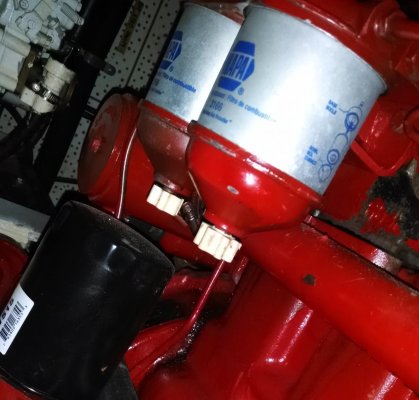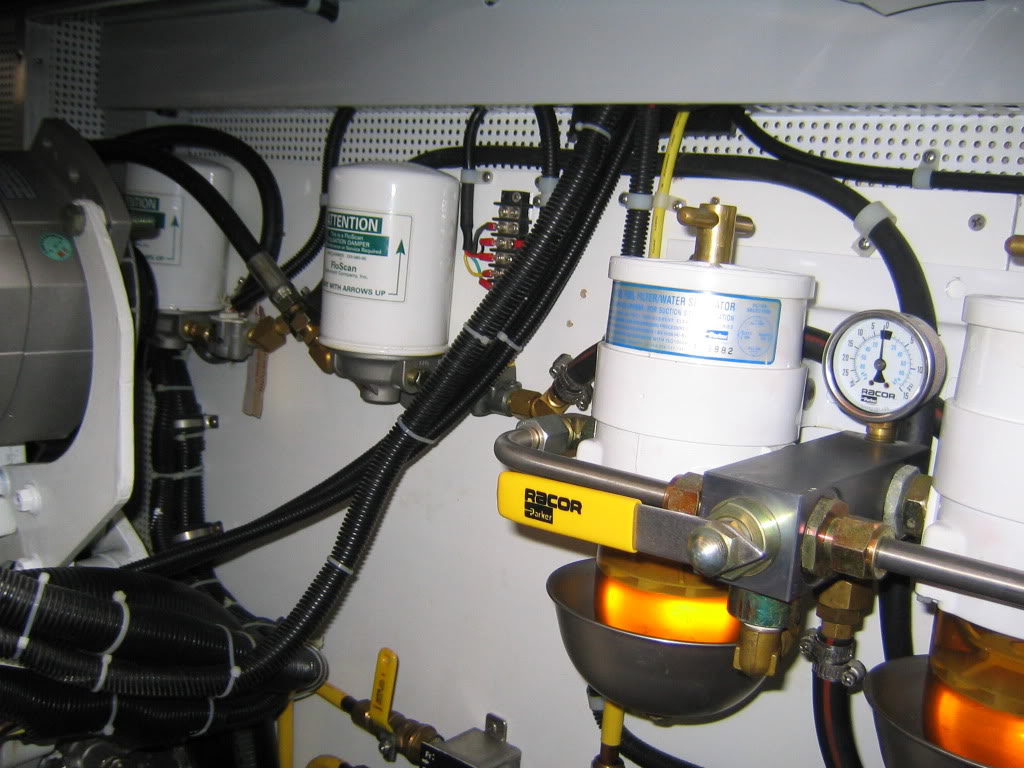hobbystuff
Senior Member
Excuse my ignorance, but previously on my sailboat I only had one fuel filter to change.....
Currently on our boat, we have a Lehman 120 with three filters leading from the tanks in the following order:
FRAM CCS1136 5 micron (seems to be original)
Racor 500FG with 2 micron (looks to be added at some point)
On Engine Dual CAV @ 10 micron (the stock Lehman filters)
This appears to be what is installed in the boat currently, based on the documentation I have.
I seem to have no choice as to the micron rating for the FRAM or on engine CAV units, but the Racor I can choose 2, 10 or 30. Is the 2 micron what should be installed? If so, does that mean my on engine filters aren't doing a darn thing?
Any advice? Thanks in advance.
Currently on our boat, we have a Lehman 120 with three filters leading from the tanks in the following order:
FRAM CCS1136 5 micron (seems to be original)
Racor 500FG with 2 micron (looks to be added at some point)
On Engine Dual CAV @ 10 micron (the stock Lehman filters)
This appears to be what is installed in the boat currently, based on the documentation I have.
I seem to have no choice as to the micron rating for the FRAM or on engine CAV units, but the Racor I can choose 2, 10 or 30. Is the 2 micron what should be installed? If so, does that mean my on engine filters aren't doing a darn thing?
Any advice? Thanks in advance.




